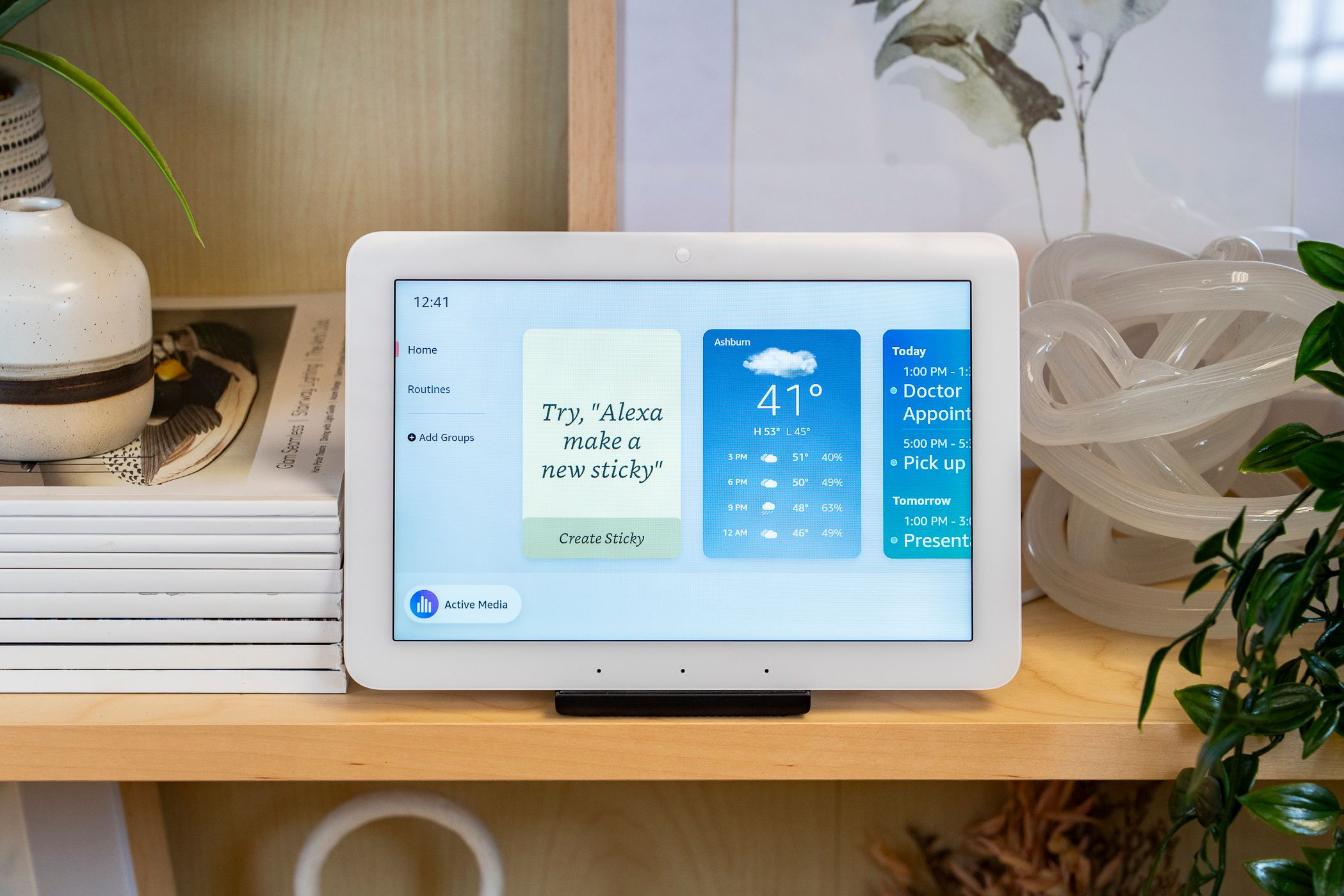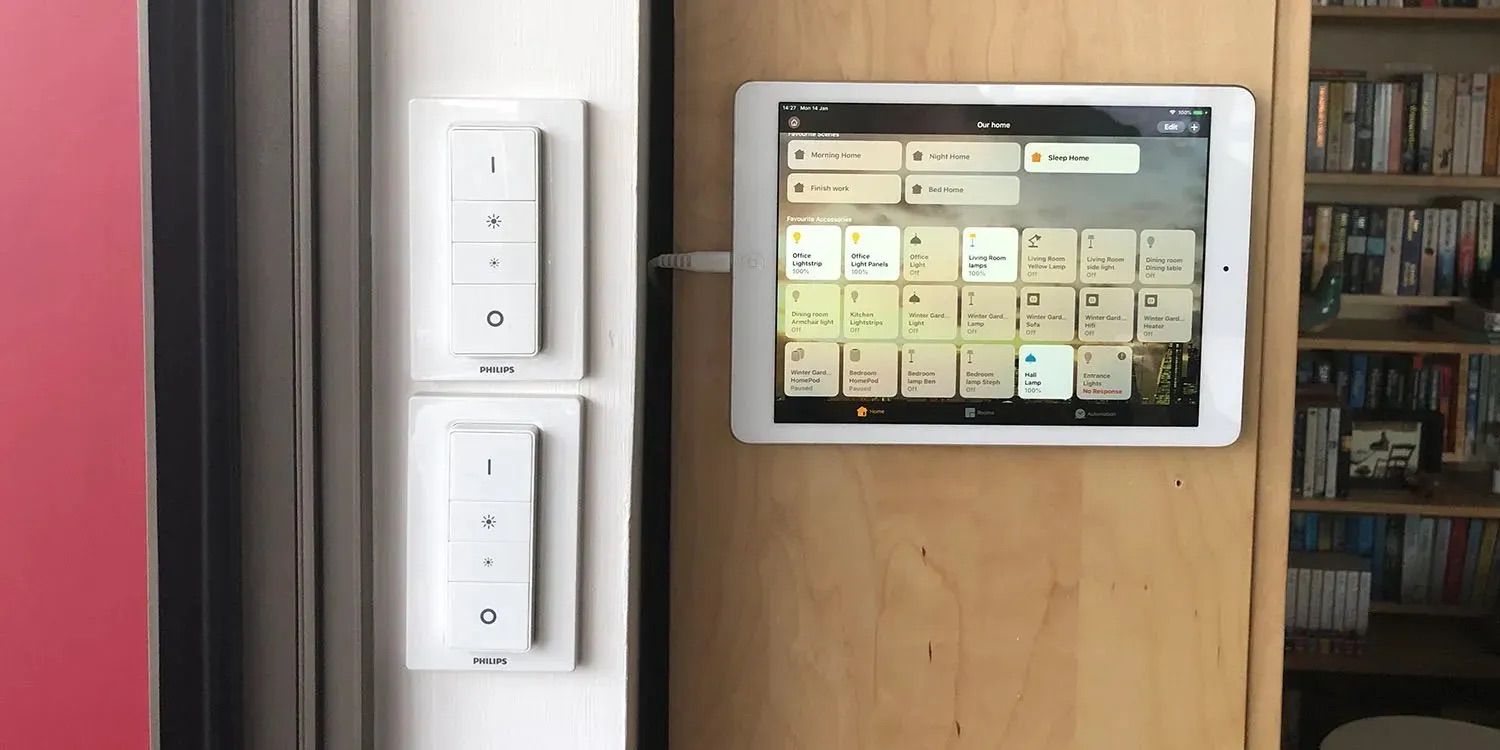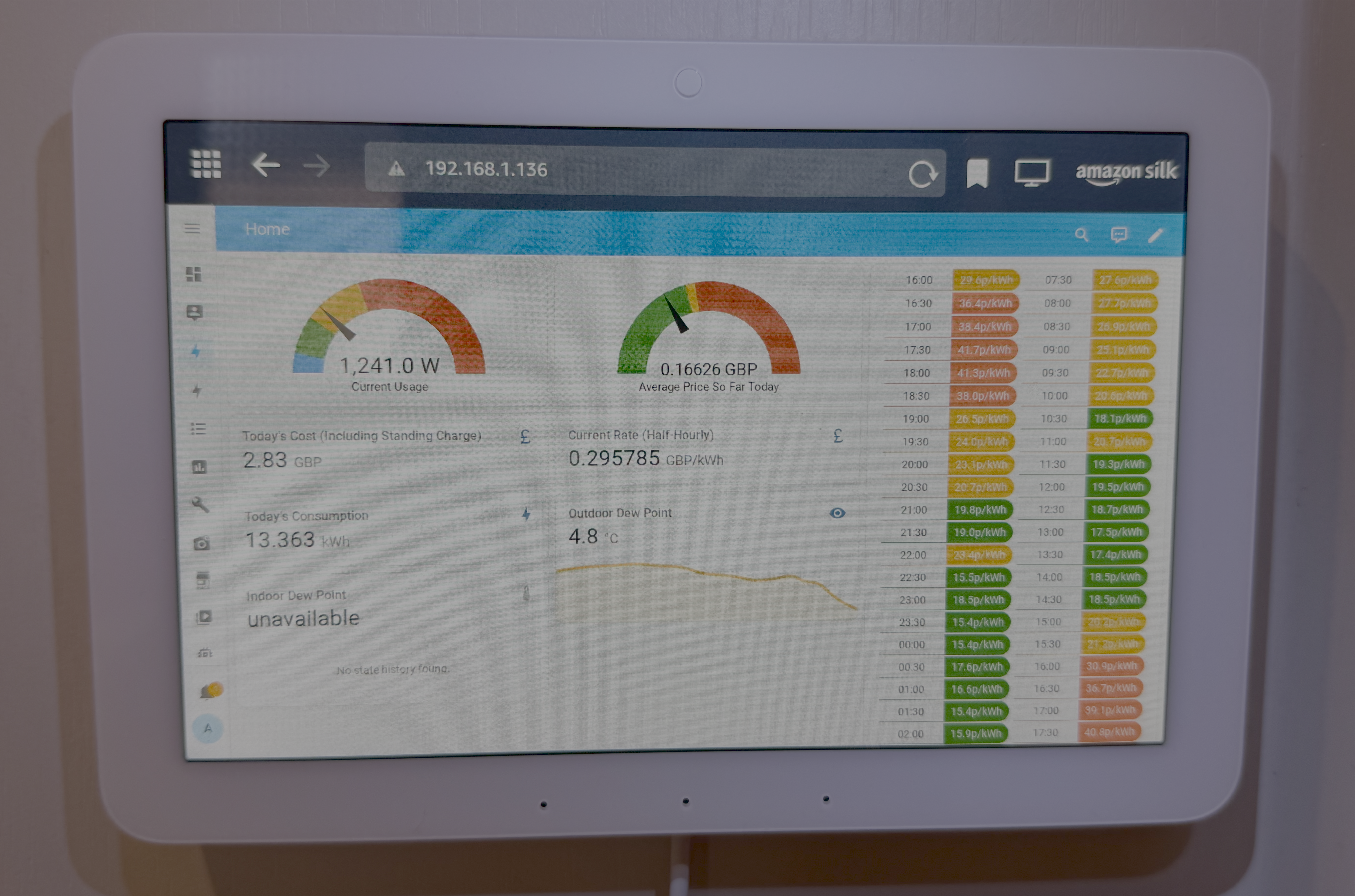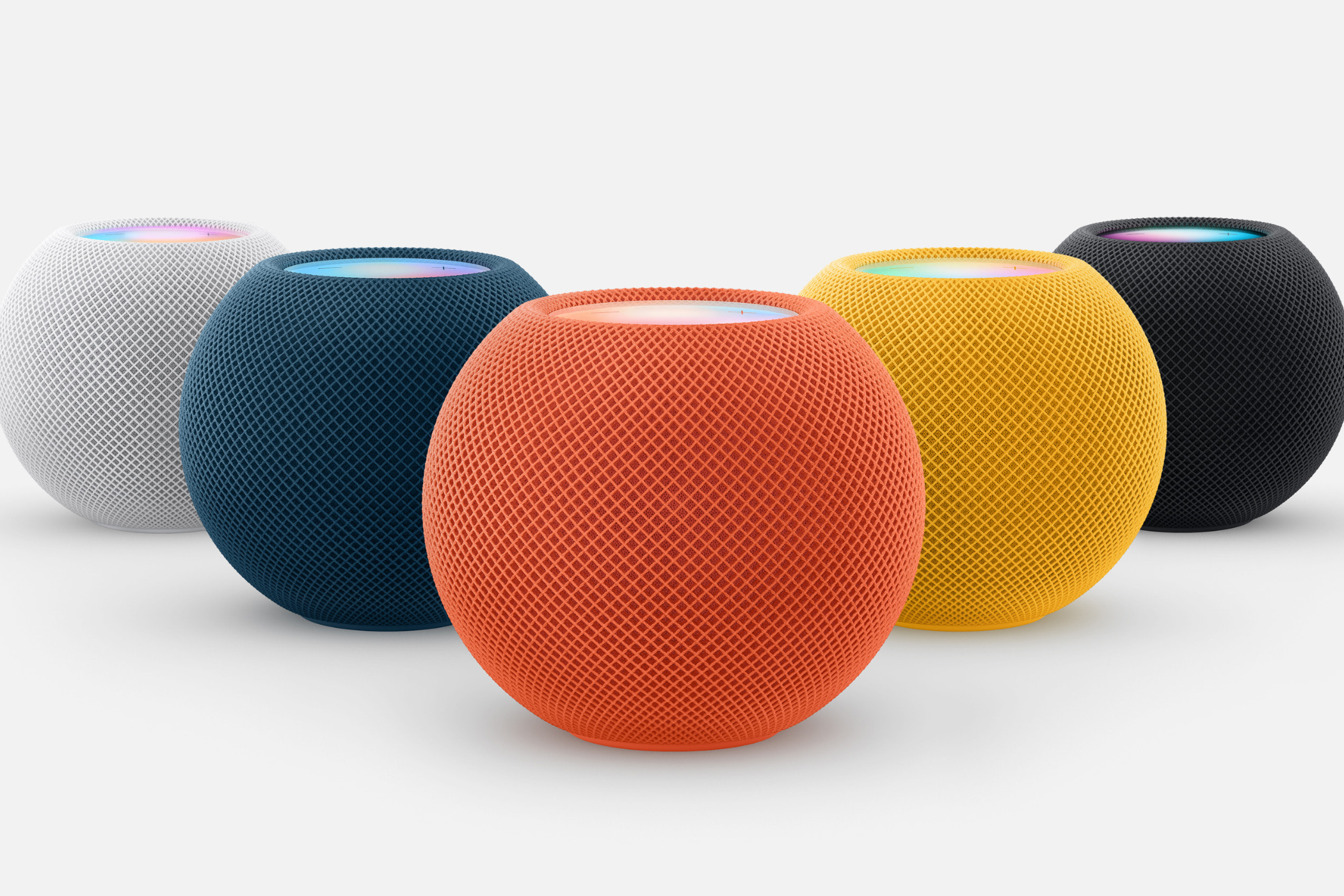Summary
- The Echo Hub is a decent smart home control, but it’s not much use if it’s not within reach.
- I want smart home tech that works through automation rather than manual control.
- My Echo Hub has ended up as nothing more than an expensive display, though I still managed to extract some value out of it.
The Echo Hub is Amazon’s first dedicated smart home control panel. It’s a product intended to make it easier to control and monitor your smart home from a single location. However, having used the device in my home, it now only gets used for one job which is far from its intended purpose.
The Echo Hub Does a Reasonable Job for What It Is
To be fair, the Amazon Echo Hub doesn’t do a bad job for its intended purpose. Many people were hoping that the Echo Show devices, particularly the Echo Show 15, would work well as smart home control panels, but the experience was less than stellar. Amazon introducing a dedicated smart home control panel was a positive move.
There’s a lot that the Echo Hub does well. You can control all your connected smart home devices from the panel, with everything grouped into rooms for easy access. It also acts as a Thread border router, allowing you to connect your Matter devices via Thread rather than Wi-Fi.
The Echo Hub can also display live feeds of multiple cameras at the same time, such as your Ring video doorbell and any other cameras you have set up. It also integrates well with the Ring Alarm system; you can disable the alarm by entering a PIN on the Echo Hub. If you’re all in on the Amazon ecosystem, it has plenty to offer.
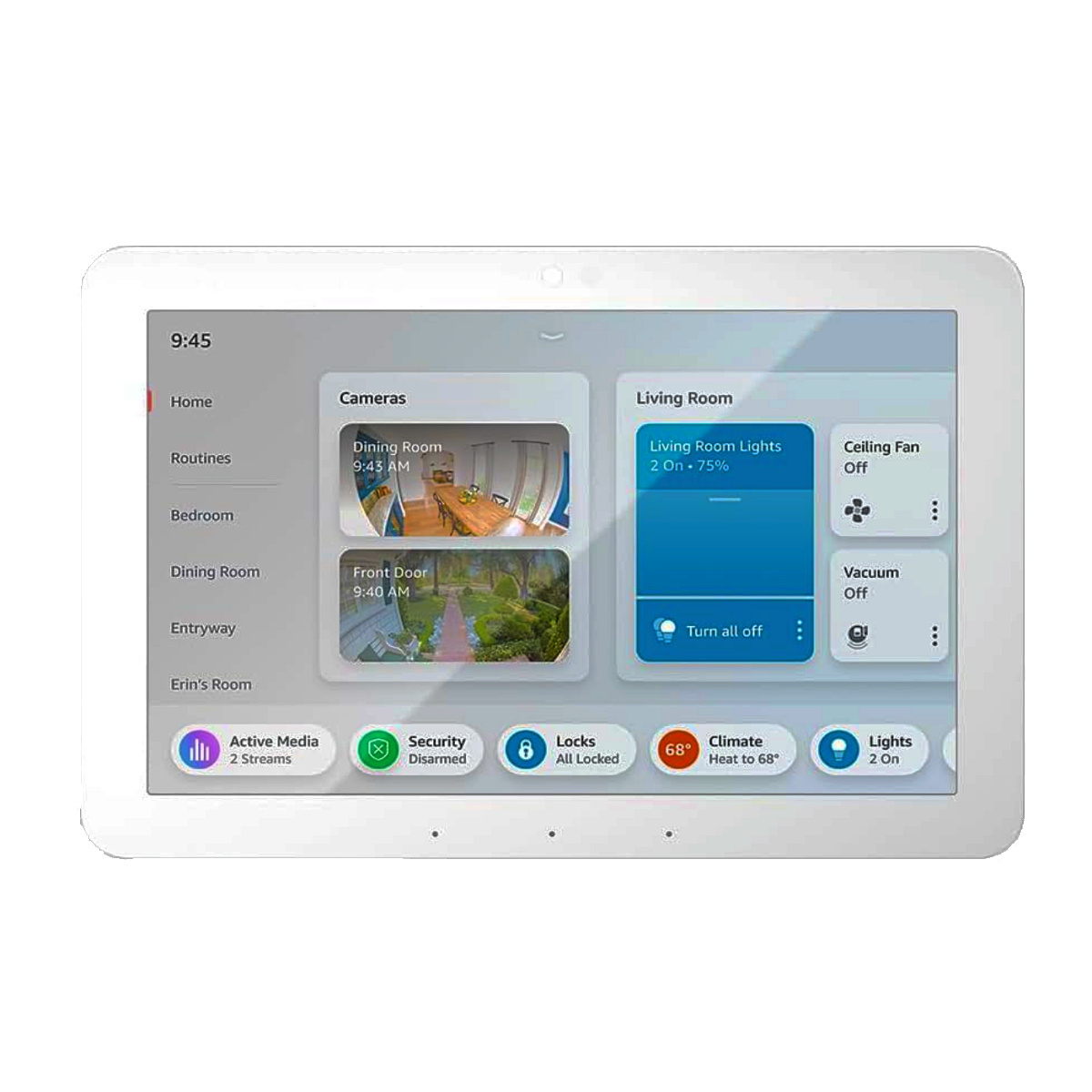
Amazon Echo Hub
Amazon’s Echo Hub is a centralized unit designed to help you take complete control over your whole-home automation. Connect to brands like Philips, Sengled, Govee, and Ring to manage individual apps, set scenes, or schedule device activation. The Echo Hub features an 8″ touchscreen that serves as the control panel to your smart home.
My Issue Is With Smart Home Control Panels in General
My problem isn’t with the Echo Hub specifically; it’s far from perfect, but it does what it’s designed to do. The problem is that I just don’t see the benefit of smart home control panels at all.
The concept seems like a good one: a centralized hub from which to control all the smart home devices in your home. You can also use it to see the status of your smart home devices, too, such as which lights are currently on, or the view from your smart home cameras.
Essentially, a smart home control panel is like a giant universal remote for your smart home. This is the key problem, however: it’s a universal remote that’s stuck to your wall. Imagine if your TV remote was stuck to the wall, and you had to get up and walk over to it every time you wanted to change the channel; that’s what a smart home control panel is like.
No matter how well you choose the location for your smart home control panel, there will always be times when you want to use it, and you’re nowhere near it, meaning you have to go to where it is in order to use it. There’s nothing smart about that.
Smart home tech is supposed to make things easier. A smart light bulb means you don’t have to get up from your seat to turn on the light. A smart home control panel, however, requires you to do just that.
What I Want From My Smart Home
There are two different approaches to creating a smart home. You can take a bunch of smart home devices, connect them up, and then control them using your phone, or voice commands, or a smart home control panel. There’s nothing wrong with this; it can make life easier, but it’s not truly smart.
The alternative is automation, which means I don’t have to do anything at all. I don’t want to have to turn my lights on by using my phone or asking Alexa or walking over to my Echo Hub. I want the lights to come on when I enter a room and turn off again when I walk out, and I only want this to happen when the room is dark enough to need the light to be turned on in the first place.
This is a truly smart home. One in which you don’t control your smart home devices, you automate them. You don’t have to do anything other than go about your life, and your smart home devices will automatically act accordingly.
It’s not possible to create smart home automations for everything. Your smart home can’t read your mind and decide you want to listen to music; you have to trigger it in some way. There are plenty of things that can be automated, however, and many of them make a smart home control panel largely redundant.
Turning on your lights is a simple example. A smart home control panel is a simple way to turn off all the lights in your home from one location. If you have your lights set up to turn on and off automatically using presence detection, however, then you never need to turn them off manually; they will always be off in all empty rooms.
My Echo Hub Is Now a Glorified Display
All of this means that I honestly can’t remember the last time that I used my Echo Hub to control any of the smart devices in my home. I simply don’t use it for its intended purpose, because it is the least convenient way for me to control my smart home.
This means that instead of acting as a smart home control panel, my Echo Hub is essentially now just a display. I’m on an electricity plan in which the prices change every thirty minutes to reflect demand, allowing me to load shift energy-intensive tasks like washing and drying to cheaper times of day.
I use the Echo Hub to show a dashboard I built in Home Assistant that displays my gas and electricity usage, the current and upcoming electricity prices, my cost for the day so far, and how the current price compares to the average for the day.
More Smart Home Control Panels Are Coming, but I Won’t Be Buying One
The Echo Hub hasn’t exactly set the world on fire; most visitors to my home don’t even recognize the device when they see it, so it certainly hasn’t had the popular success that Amazon’s Echo smart speakers have. However, more companies are jumping on the smart home control panel bandwagon.
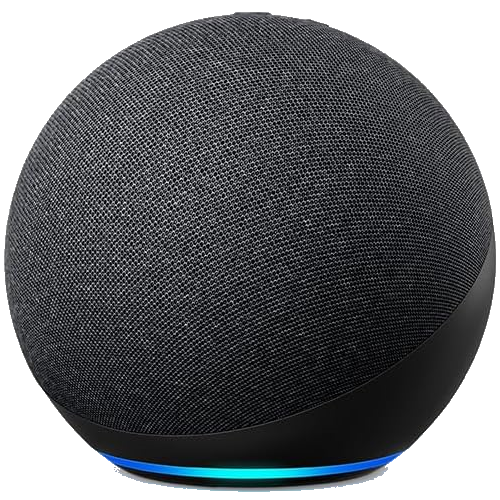
Amazon Echo 4th Gen
Experience premium sound, smart home control, and Alexa’s endless skills with the Amazon Echo 4th Gen. Featuring a sleek spherical design, it delivers rich audio and keeps you connected with hands-free convenience. Perfect for music, news, smart device control, and more.
Apple is rumored to be launching its own smart home control panel at some point this year. So far, there are only rumors, but the device is likely to resemble a small iPad that can be attached to a wall or placed on a stand. Some reports even suggest there may be a model with a robotic arm that can move and rotate the screen.
However, the same problems that plague the Echo Hub are likely to hold true for Apple’s smart home control panel; it might be an easy way to control your smart home devices if it’s within reach when you need it, but there will be plenty of times when the control panel is out of reach or even in another room, making it useless for its purpose.
Having tried out the Echo Hub, I’m not planning on getting another smart home control panel again. The money could be better spent on devices that will help improve the automation of my smart home.
After the disappointment of the Echo Show devices as smart home control panels, the Amazon Echo Hub made up for that disappointment by being a dedicated smart home control panel. However, having lived with the device, my problem isn’t necessarily with the Echo Hub itself; it’s smart home control panels in general that are the issue. Ultimately, they’re just very expensive switches that only offer convenience under limited circumstances.


